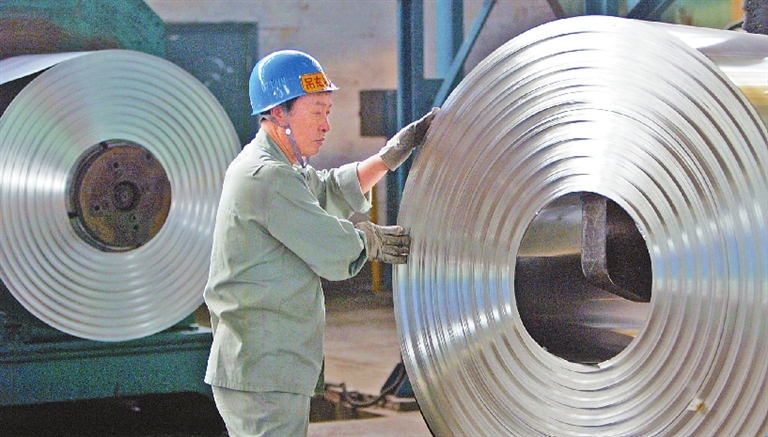
STEEL mills in China may have taken a wrong turn by adding millions of tons of new high-end capacity just as the country’s car sector, a key steel consumer, undergoes its first contraction in decades, cutting metal demand. Hot-rolled coil (HRC), steel that is heat processed into metal sheets used for car bodies and household appliances, was a steady profit driver for mills but orders are now slowing down, two major steel mills and several traders said. Sliding demand for hot-rolled coil is a further barometer of China’s lagging industrial sector which is struggling with lower profits amid a trade war with the United States. The slowdown, occurring as overall steel profit margins have dropped 60 percent in the past three months, threatens to push China’s entire embattled steel sector further into debt, forcing mills to cut costs and leaving them unable to upgrade products and processes, said analysts and mill executives. “We may have to lay off 10 percent of our workers this year,” said a manager at a medium-sized steel mill in Hebei, China’s biggest steelmaking province, with 10,000 staff. HRC accounts for about half of China’s total steel output, up from roughly one third in the early 2000s, after mills upgraded product lines to comply with the government’s goal of expanding the higher value products made by its heavy industry. Profit margins for HRC shot to more than 1,100 yuan (US$164.37) per ton in 2018 as benchmark futures prices pushed beyond 4,000 yuan a ton to record highs. That prompted mills to expand their capacity even further, and 20 million tons per year of new HRC lines are set to start up this year. But that expansion now looks out of synch with China’s sputtering economic engine. Annual automobile sales in China for 2018 contracted for the first time in more than 20 years. The sector uses almost 30 percent of the country’s hot-rolled coil and products derived from it. HRC futures fell about 25 percent after reaching a record in August 2018 to about 3,000 yuan per ton, pushing margins into the red for the first time since 2015. “The hot-rolled coil market will see oversupply this year. On the one hand mills are expanding their output, meanwhile demand for HRC is weakening,” said Li Xinchuang, president of the China Metallurgical Industry Planning and Research Institute, a government think tank. “Lots of manufacturing plants who actually use HRC have moved outside China.” With the additional hot-rolled coil capacity, higher raw material costs and flat demand, profit margins for the HRC sector as a percentage of earnings before interest, taxes and depreciation (EBITDA) are set to slump to 6 percent this year, down from an EBITDA margin of 15 percent in 2018, said Kevin Bai, an analyst at CRU in Beijing. The flat demand for higher value capital goods like cars and washing machines has meant HRC spot orders are falling and there are risks for long-term contracts, said a sales manager at a small-sized mill in Hebei. “We don’t even know if the long-term contracts can be maintained in the second half of this year. There are too many uncertainties,” he said.(SD-Agencies) | 
